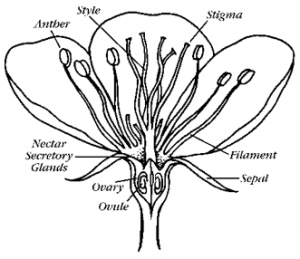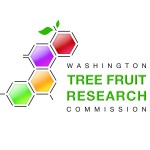Tory Schmidt, Tree Fruit Research Commission, Written March 10, 2016, updated April 1, 2018. reposted March 2023.
Spring is here and it is time to get ready for thinning season. While all aspects of orchard management are important, there may be no decision made by growers more critical to their economic bottom lines than how to thin their crop. Choices you make regarding your crop load management will fundamentally determine the primary drivers of your profitability: fruit size, fruit quality, total yield, and return bloom, not to mention how much time and money you will spend to hand thin, harvest, and prune your trees.
One of our best cooperators has a rather satirical, but sage perspective on the impact of these decisions: “Don’t worry if you mess up your thinning this year – you’ll have 23 months to figure out how to get it right the next time around.”

Here are some key points to keep in mind as you develop your thinning strategies:
- The earlier you thin your crop, the better chance you’ll have to improve fruit size and return bloom. Aggressive targeted pruning is a good start and chemical bloom thinners tend to outperform chemical postbloom thinners.
- Despite many urban (rural?) legends spread around coffee shops and over the hoods of pickups, WA apple growers rarely over-thin their crops with chemicals. Instances of poor fruit set usually have a lot more to do with weak bloom and/or pollination rather than excessive activity of chemical thinners. That being said, if you haven’t over-thinned a block recently, you probably aren’t being aggressive enough in general.
- Prolonged periods of warm, cloudy spring weather tend to increase carbohydrate stress in fruit trees and are likely to amplify the effects of chemical thinners like lime sulfur, NAA, and carbaryl which increase plant stress. Conversely, cool, sunny weather often decreases chemical thinner efficacy.
- Research and industry experience have shown oil + lime sulfur bloom thinning programs to be our most effective chemical options. Various combinations of carbaryl, NAA, and BA work well as postbloom thinners, especially with temperatures in the low to mid 70s.
- Many growers feel they are improving their crop load management with the use of the pollen tube growth model to determine the application timing of their lime sulfur or oil + lime sulfur applications. WSU’s AgWeatherNet hosts models for Gala, Fuji, Golden Delicious, and Cripps Pink. You will need to have an account with Ag Weather Net (free of charge) and will find the pollen tube model under the “Crop Models” tab on the left side menu.
- Pay attention to the anatomy of your flowers– it takes longer to fertilize or “set” a flower with a long style (see figure) than a flower with a short style, meaning you would need to apply a chemical bloom thinner earlier to get good results in a block with short, squatty floral structures.
- One general maxim we have learned through the years: If you aren’t worried in June that you dropped the whole crop, you probably aren’t going to be happy at harvest or next spring, so put on your big kid pants and BE AGGRESSIVE!
Contact
Project Manager
Washington Tree Fruit Research Commission
1719 Springwater Ave.
Wenatchee, WA 98801 USA
Office: (509) 665-8271 x4
Mobile: (509) 669-3903
Email: tory@treefruitresearch.com
Web: www.treefruitresearch.com Fruit Matters articles may only be republished with prior author permission © Washington State University. Reprint articles with permission must include: Originally published by Washington State Tree Fruit Extension Fruit Matters at treefruit.wsu.edu and a link to the original article.
Fruit Matters articles may only be republished with prior author permission © Washington State University. Reprint articles with permission must include: Originally published by Washington State Tree Fruit Extension Fruit Matters at treefruit.wsu.edu and a link to the original article.

